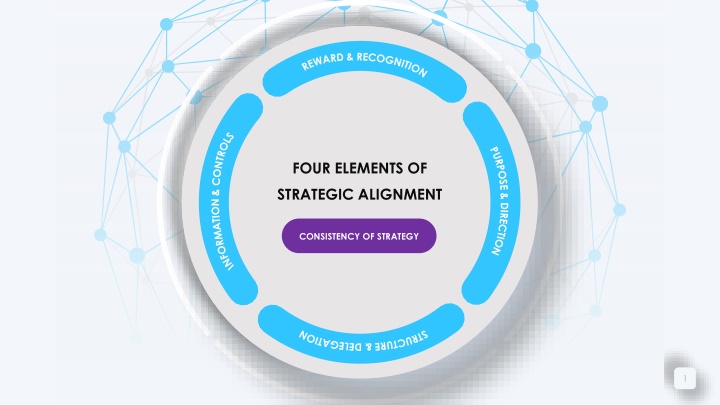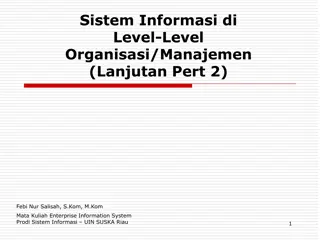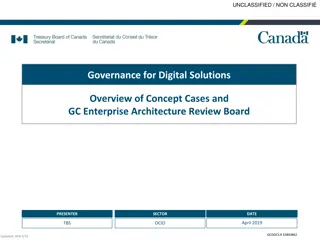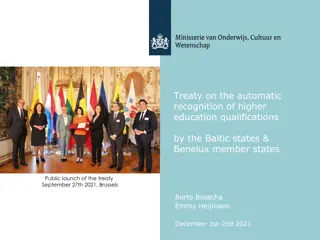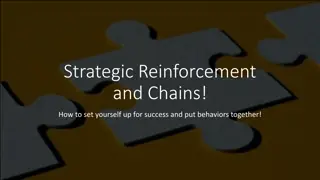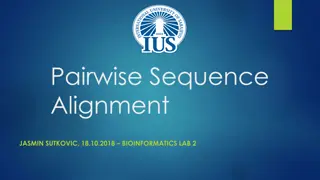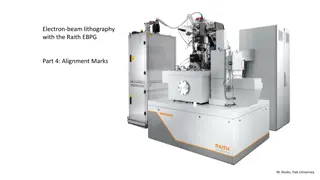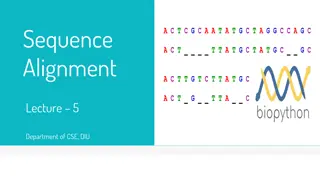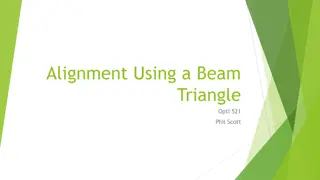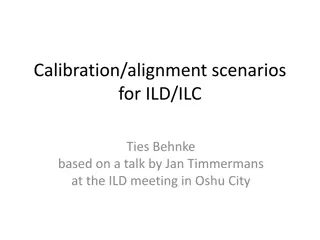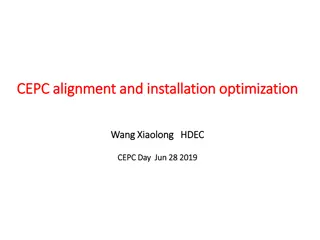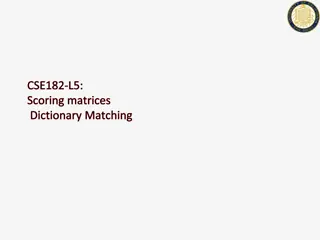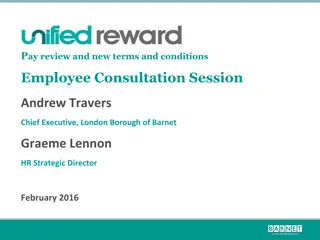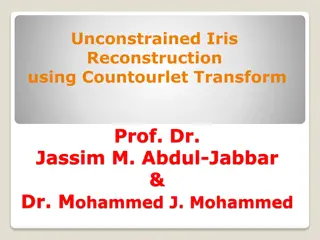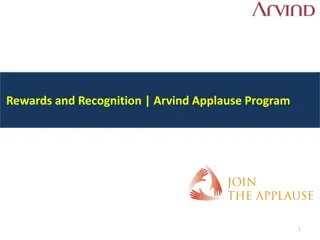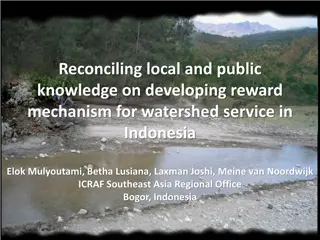Elements of Strategic Alignment in Reward and Recognition Systems
Explore the key components of strategic alignment in reward and recognition systems, including vision, mission, values, and functional structures. Learn how these elements drive organizational purpose, direction, and consistency in strategy implementation.
Download Presentation

Please find below an Image/Link to download the presentation.
The content on the website is provided AS IS for your information and personal use only. It may not be sold, licensed, or shared on other websites without obtaining consent from the author.If you encounter any issues during the download, it is possible that the publisher has removed the file from their server.
You are allowed to download the files provided on this website for personal or commercial use, subject to the condition that they are used lawfully. All files are the property of their respective owners.
The content on the website is provided AS IS for your information and personal use only. It may not be sold, licensed, or shared on other websites without obtaining consent from the author.
E N D
Presentation Transcript
REWARD & RECOGNITION INFORMATION & CONTROLS PURPOSE & DIRECTION FOUR ELEMENTS OF STRATEGIC ALIGNMENT CONSISTENCY OF STRATEGY STRUCTURE & DELEGATION 1
REWARD & RECOGNITION Vision Vision is the long term focus of the organization and provides the macro purpose and direction INFORMATION & CONTROLS Mission PURPOSE & DIRECTION How the vision will be accomplished including FOUR ELEMENTS OF relationship management of key stakeholder the Market Product Scope of the business. STRATEGIC ALIGNMENT Values CONSISTENCY OF STRATEGY The key values which will establish & define the culture and behavior of the organization and how it will interact with all stakeholders Strategic thrusts Key strategic thrusts enable us to achieve STRUCTURE & DELEGATION our overall purpose. These will change & develop as the organization grows. 2
REWARD & RECOGNITION Functional A senior manager responsible for each key function i.e. Sales, marketing, Operations, Finance IT and HR etc. INFORMATION & CONTROLS PURPOSE & DIRECTION FOUR ELEMENTS OF Geographic STRATEGIC ALIGNMENT Key responsibility for business based on geography i.e. countries or regions. CONSISTENCY OF STRATEGY Strategic Business Units Establish separate business units for specific products & customers which STRUCTURE & DELEGATION manage all the elements of that business. 3
REWARD & RECOGNITION INFORMATION & CONTROLS PURPOSE & DIRECTION Information & Controls FOUR ELEMENTS OF STRATEGIC ALIGNMENT The systems or processes used to provide information which enables management and control of the organization. It includes timing and accuracy of information including operational, functional, and CONSISTENCY OF STRATEGY accounting information on a periodic basis. It also embraces management meeting, problem solving processes and communication within the organization. STRUCTURE & DELEGATION 4
REWARD & RECOGNITION INFORMATION & CONTROLS PURPOSE & DIRECTION Rewards & Recognition FOUR ELEMENTS OF STRATEGIC ALIGNMENT The focus of the reward element is to ensure that how the various employees and/or managers are remunerated (i.e. base salary, incentives, commissions, performance elements etc.) is consistent with desired CONSISTENCY OF STRATEGY strategic objectives. The recognition element is to highlight that this element is separate and distinct from reward and is the culture of how people are recognized and/or praised for success and achievements. STRUCTURE & DELEGATION 5
ALIGNED Best of intentions, but incapable Very best chance of winning How aligned is your strategy with THE BEST COMPANIES your long-term purpose ? ARE THE BEST ALIGNED Strategy, purpose and organizational NOT ALIGNED capabilities must be in sync. Not long for this world Boldly going nowhere Strategy Effectiveness Organizational Effectiveness NOT ALIGNED ALIGNED How aligned is your strategy with your organizational capabilities ? 6
FIVE-STAR STRATEGIC ALIGNMENT DIRECTION What are your strategic goals ? How do they drive STRATEGY the business model ? POWER SKILL/MINDSET What kinds of people does your What type of organizational PEOPLE STRUCTURE business model require ? What structure does your business type of mindset is needed ? model require ? MOTIVATION INFORMATION What reward system does your What information flows, REWARDS PROCESSES business model require ? How processes and workflows does can you motivate your people ? your business model require ? 7
STRATEGIC ALIGNMENT IMPLEMENTATION NO STRATEGIC ALIGNMENT HIGH LEVEL GOALS The Execution Gap Marketing Field Operation HIGH LEVEL GOALS Finance Partner Human Resource WITH STRATEGIC ALIGNMENT IMPLEMENTATION 8
ACHIEVING STRATEGIC ALIGNMENT VALUE PROPOSITION PEOPLE PROPOSITION The utility buyers receive The positive motivations & from an offering minus the incentives put in place for people PROFIT PROPOSITION price they pay for it. needed to support the strategy. The revenue an organization generates from an offering minus the cost to produce & deliver it. Structuralist Approach Reconstructionist Approach The alignment of the three strategy The alignment of the three strategy propositions in pursuit of BOTH propositions in pursuit of EITHER differentiation or low cost. differentiation or low cost. 9
Vision Mission Executive management Organizational Goals STRATEGY EXECUTION Organizational Strategy & Objectives STRATEGY EXECUTION STACK Portfolio Management Management by Program Mgmt. portfolio, program, project & operations Operation Management Project Mgmt. 10
BUSINESS VS. EXECUTION BUSINESS SIDE EXECUTION SIDE control account work package goal strategy initiative portfolio program project deliverable activity EXECUTIVE MANAGEMENT CREATION OF PORTFOLIOS CREATION OF PROGRAMS & PROJECTS LOWEST LEVEL OF A PROJECTS 11
CLIMBING THE STRATEGIC LEVEL 05 Optimize ALIGNMENT PYRAMID LEVEL 04 Improved Process LEVEL 03 Established Process LEVEL 02 Committed Process LEVEL 01 Initial Process ALIGNMENT GAP 12
LEFT BRAIN RIGHT BRAIN SALES & MARKETING FINANCE ORGANIZATIONAL GOALS CONCEPTUAL ORGANIZATIONAL GOALS LOGIC EFFICIENCY IMAGE BUILDING THE STRATEGIC ALIGNMENT MATRIX ORGANIZATIONAL GOALS EFFECTIVENESS COMMUNITY HUMAN TASK ORGANIZATIONAL GOALS OPERATIONS HUMAN RESOURCES 13
STRATEGIC ALIGNMENT CULTURE & SHARED BELIEFS ORGANIZATIONAL CAPABILITIES COMMUNICATION change readiness translation goals fit with organization strategy formulation common goals understanding individual contribution decision making support of systems quality priorities impact communication 14
VENKATRAMAN MODEL BUSINESS STRATEGY Strategic Integration IT STRATEGY Business scope Technology scope Distinctive competencies Systemic competencies Business governance IT governance Strategic Fit Strategic Fit LINKAGE AUTOMATION BUSINESS STRUCTURE IT STRUCTURE Administrative infrastructure Architecture Processes Processes Skills Skills Functional Integration 15
VENKATRAMAN MODEL Technology Scope Business Scope E X T E R N A L Business Governance Distinctive Competency Core Competency I/T Governance Business Strategy IT Strategy Architecture Structure I N T E R N A L I/T Architecture Processes Processes Skills Skills Infrastructure IT Infrastructure F UN C T I O N A L I N T E G R A T I O N 16
HOSHIN KANRI MODEL What must be done Corporate Objective / Initiatives How it will be done A P C D Plan, Do, Act, Check V E R T I C A L A L I G N M E N T A P Sites Initiatives Site Objectives C D A P Functional Objectives Sites Initiatives C D A P C D A P A P Team Objectives Team Initiatives C D C D A P C D A P Specific Activity, Goals C D Monthly reviews to monitor progress & counter measures required C R O S S F U N C T I O N A L A L I G N M E N T 17
Activity 1: Modify customer support policies Activity 2: Implement video tutorials Activity 3: Implement innovation pipeline Activity 4: Plan the development of new product Activity 5: Conduct constraints analysis PRIORITIES & ACTIVITY Annual obj 2: Achieve excellence in product training Annual obj 1: Focus on needs of high-paying clients KPI 03: % of function with up-to-date video tutorials KPI 07: Feature/market fit for the new features, % Annual obj 3: Test & implement innovative ideas KPI 06: Marketing budget for the new features, $ KPI 08: Improvement ideas suggested quarterly KPI 01: time to respond for high-paying clients KPI 05: Time to market for new features, days KPI 02: Churn rate for high-profile clients, % KPI 09: Processes with optimization plan, % Annual obj 4: Optimize business processes ANNUAL OBJ. KPI 04: Innovation pipeline performance KPI S Owner 02: Customer service team Owner 03: Management team Owner 01: Development team Annual obj 5: LONGTERM OBJ. Owner 04: Owner 05: KPI 10: Long-term objective 1: Build high-quality product Correlations/contribution : Resources : Long-term objective 2: Keep team motivated Long-term objective 3: Achieve sustainable growth Complementary BSC Designer Strategy Execution software Long-term objective 4: Direct/primary Long-term objective 5: 18
COMMUNICATION VALUE MEASUREMENT GOVERNANCE Understanding of business by IT IT, Business and Balanced Metrics Business and IT strategic planning Understanding of IT by business Service level agreements Reporting/organization structure Protocol rigidity Benchmarking Budgetary control Knowledge sharing Normal assessments/reviews IT investment management Liaison(s) effectiveness Continuous improvements Steering committee(s) & prioritization STRATEGIC ALIGNMENT MATURITY MODEL Business perception of IT value Traditional, enabler/driver, external Innovation, entrepreneurship Role of IT in strategic business planning standards articulation Locus of power, mgmt. style Shared goals, risk, rewards/penalties Architectural integration : functional, Change readiness, career crossover IT program management enterprise, inter-enterprise Education, cross-training Relationship or trust style Architectural transparency Social, political, trusting environment PARTNERSHIP SCOPE & ARCHITECTURE SKILLS 19
